Iran may pay for you to be trans, but it comes with a cost — your dignity

- Oops!Something went wrong.Please try again later.
As a child growing up in Tehran, Shayan Varamini didn't know what it meant to be transgender.
Assigned female at birth, Varamini always felt drawn to dressing boyishly. He'd once had romantic feelings for a girl in his school, leading him to assume he might be a lesbian.
But in Iran, where same-sex relations can lead to imprisonment, corporal punishment, and even execution, he needed to be sure.
When he turned 18, just over a decade ago, Varamini sought guidance from a psychologist, who told him he was not a lesbian. Instead, he was diagnosed with "gender-identity disorder," an outdated term used to describe being transgender.
Because of its classification as an illness, Varamini's diagnosis came with a proposed treatment — what the Iranian government calls "sex-reassignment surgery."
After a lengthy bureaucratic procedure, the Iranian state not only recognized Varamini's transition but also helped finance it.
Varamini's surgeries were covered by his public health insurance, along with a modest grant the state paid him upon completion. Varamini paid 250,000 tomans, or about $60, out of pocket for the surgeries.
This generous coverage has led some to describe Iran, a deeply religious and socially repressive culture, as an unlikely "hub" for gender-affirming care.
While exact figures are hard to come by, a 2022 report by the UK's Home Office said that about 4,000 gender-affirming surgeries were performed each year in Iran. In 2007, The Guardian reported that Iran ranked second only to Thailand in the number of gender-affirming surgeries performed.
But transgender Iranians told Business Insider that this portrayal doesn't capture their reality — one marked by humiliation, rejection, and even violence.
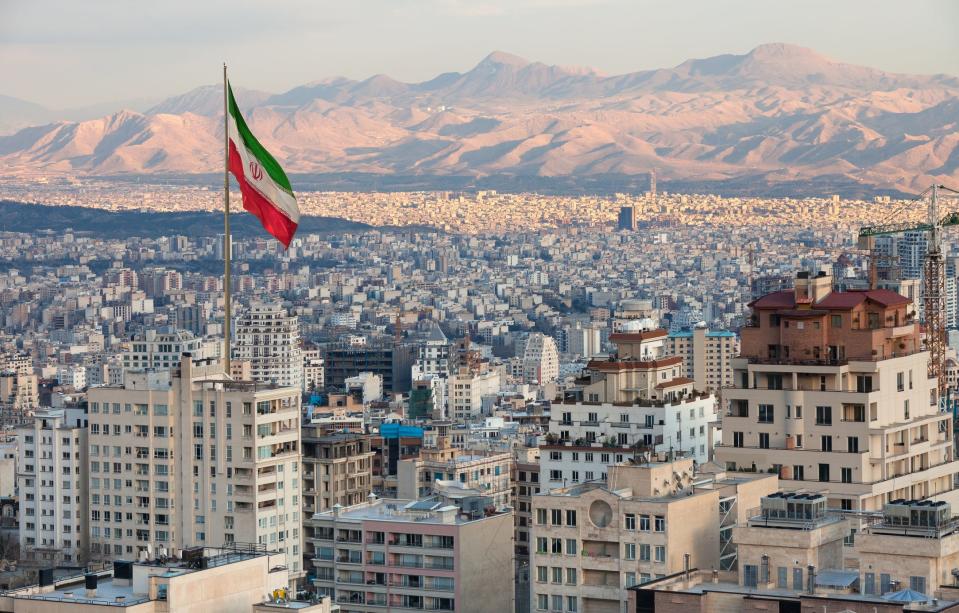
On the surface, Iran's transgender policy might seem surprisingly liberal, an anomaly in the Muslim world. But a closer look reveals a darker picture.
Iran permits and funds gender-affirming care while discriminating against lesbian, gay, and bisexual people, along with others who identify as queer.
In a country that has executed people for being gay, what's behind this paradox?
Thanks in part to an edict issued by a Muslim ruler in the 1980s, being transgender in Iran is considered a medical disorder, while being gay is considered a sin.
Some Iranian leaders have made it a mission to erase homosexuality in the country — and activists believe that the government funds gender-affirming surgery in part to accomplish that.
But even once a person has transitioned, they are by no means safe.
Earlier this year, Tehran's city council started creating no-go zones for transgender people. Antidiscrimination laws for LGBTQ+ people don't exist in Iran, nor is there any recognition of genders beyond the binary male and female.
Becca Kia, who now lives in the US, postponed her transition until leaving Iran, recognizing that the country's rigid definitions of sexuality and gender left no room for her.
"Trans people are being suppressed," she told BI. "Like trans lesbian women or trans men who are gay, they cannot transition unless they submit to that rule that, OK, I'm a trans man, but I'm attracted to a woman."
Anti-gay laws
In Iran, same-sex relations are strictly prohibited by law, which doesn't differentiate between consensual and nonconsensual acts.
Punishments vary based on the roles people play in sexual encounters. Under the Islamic Penal Code, engaging in penetrative sex could result in a punishment of up to 100 lashes or, in some cases, the death penalty. Sexual intercourse between women carries a penalty of up to 100 lashes, while those who engage in lustful kissing or touching may face up to 74 lashes.
The Iranian government does not publicize its punishment of gay or lesbian people. However, a 2021 report by Eleos Justice and the Capital Punishment Justice Project estimated over 250 people were executed for same-sex conduct between 1979 and 2004, and at least 79 people have been executed since 2004.
Individuals who identify outside their assigned gender are at risk of these penalties — unless they undergo a physical transition.
"If I were caught in a compromising situation with a man, the sodomy punishments would apply," Raha Ajoudani, a trans woman who is sexually interested in men, said.
On a video call earlier this year, Ajoudani brushed her blond bob behind her ears, showing off her perfectly manicured nails. She'd recently had a tense interaction with the Iranian morality police, but she said she's experienced far worse.
Ajoudani dresses femininely and uses she/her pronouns, but because she has refused to undergo surgical procedures, legal documents mark her as male.
Despite pressure from the authorities, Ajoudani said she refuses to get surgery because she doesn't "have a problem with my body."
Raha Ajoudani
When she was 15, Ajoudani said she was made to visit a state psychologist, only to be presented with an ultimatum.
"They told me I had two options," she told BI. "Either go back to what society expected of me or undergo surgery."
She didn't do either, and in October 2022 she was detained by the morality police.
Ajoudani said she fell victim to a honey-trap scenario in which a man she was talking to online lured her to a public spot, where two dozen officers apprehended her.
In December 2022, she was detained again.
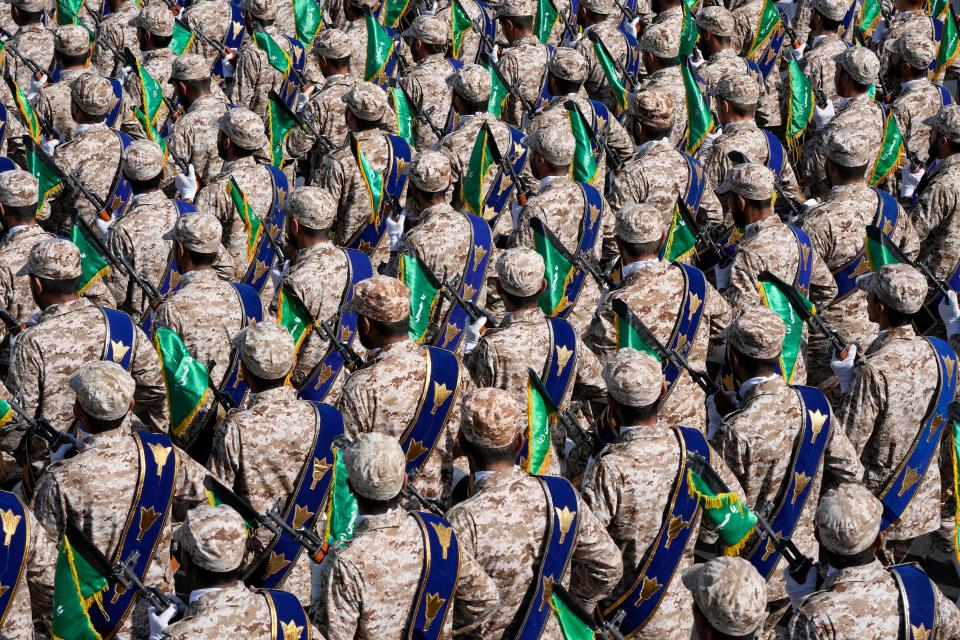
In that instance, Ajoudani said that Revolutionary Guard Corps officers raided her home, confiscated her phone, and searched her belongings. She was dressed in a miniskirt and wearing makeup when arrested and was dressed the same when placed in solitary confinement in a men's prison.
Ajoudani initially received a 30-month prison sentence and a temporary travel ban for insulting "Islamic sanctities," among other charges.
Ajoudani told BI that the court determined no prison facilities were equipped to house her — a transgender person deemed to have "mental and sexual issues" because she had not undergone gender-affirming surgeries.
"The surgical blade is a legal must for trans people," Ajoudani said. "Either you undergo it, or you are completely deprived of your civil rights, and that is exactly what they did to me."
A historic fatwa
In 1987, the leader of Iran's Islamic Republic, Ayatollah Ruhollah Khomeini, issued a fatwa — an Islamic legal decree — declaring that gender-affirming surgery did not violate Islamic law.
The key player behind Khomeini's decree was Maryam Khatoon Molkara, a trans woman whose story convinced him to declare the fatwa.
When Molkara was 2 years old, her mother found her mimicking putting on makeup by applying chalk to her face. As she grew older, Molkara knew she was transgender, but as a devout Muslim, she struggled to understand how she could reconcile her gender dysphoria with her faith.
She began corresponding with religious figures, including Khomeini, a respected Shiite jurist living in exile in Iraq at the time, seeking religious blessing to undergo a transition.
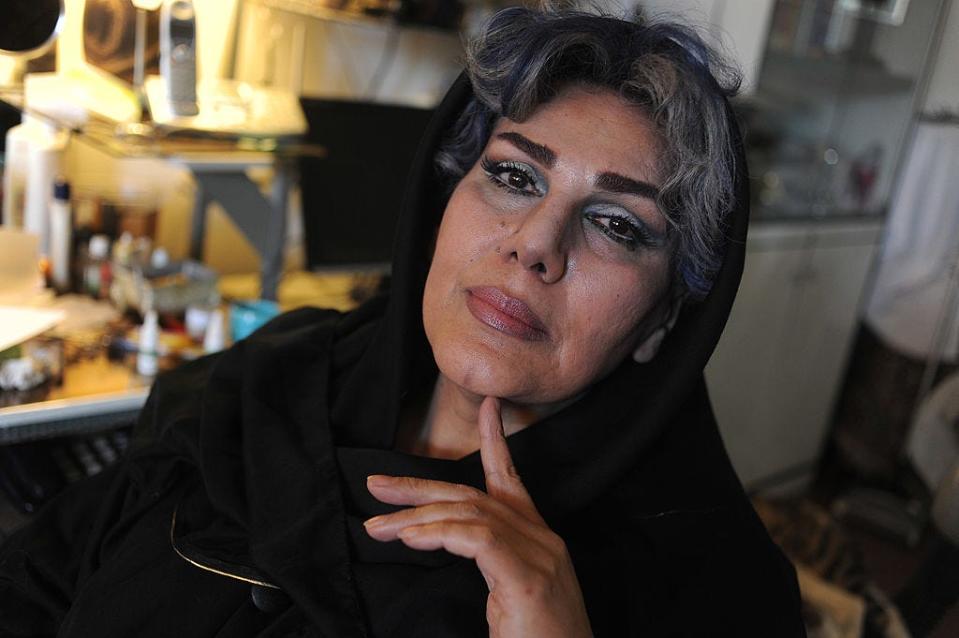
In 1979, a revolution shook Iran, leading to the establishment of the Islamic Republic. The new government enacted a legal code rooted in Sharia law, which ushered in a period of profound adversity for LGBTQ+ people.
Under the new laws, Molkara lost her job, had to dress like a man, was forcibly given male hormones, and was confined for a time to a psychiatric facility.
But she persisted in her attempts to communicate with Khomeini, who had risen to become the supreme leader of the newly formed republic.
"I knew I could get the operation easily enough in London, but I wanted the documentation so I could live," she told The Guardian in 2005.
Dressed in a man's suit and clutching a Quran, she confronted Khomeini at his compound in Tehran to plead her case. At first, she was beaten by security guards, but seeing the commotion, Khomeini's relatives intervened, granting her an audience with the ayatollah.
Khomeini provided her with a letter giving her religious authorization to proceed with the surgeries. This was the start of a new era in which transgender Iranians could physically transition.
Home visits and scrutiny
Nonetheless, getting permission to proceed with the surgeries in Iran is no easy feat.
People seeking government support for transitioning must consent to home visits and scrutiny of their private lives, according to a document published by the State Welfare Organization of Iran and seen by BI.
And that's just one facet of the invasive, arduous, and often degrading process.
A 2023 report by Australia's Department of Foreign Affairs and Trade said obtaining approval for the surgery in Iran may take "several years of public court hearings, virginity tests, and mandatory counseling."
Those seeking surgery may bounce back and forth between the Legal Medicine Organization — a medical institution within the judiciary — and the court system while undergoing various tests to determine whether they meet the criteria for Iran's version of a gender-dysphoria diagnosis.
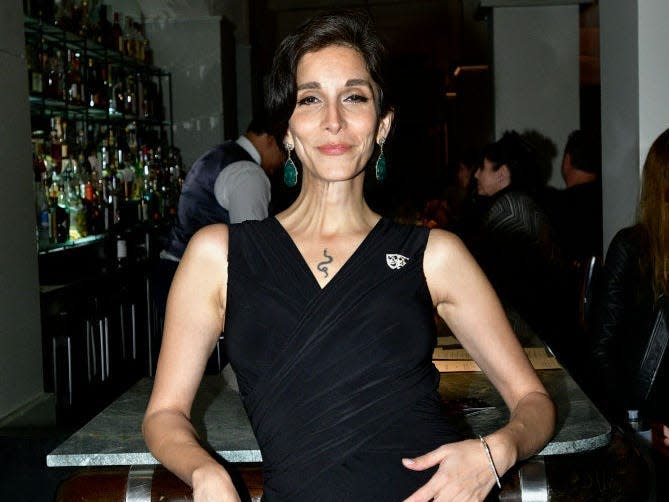
Pooya Mohseni, an Iranian American actor and trans activist, recalled the humiliation of being "interrogated" in 1994 by a panel of psychologists.
"The questions were so graphic that my mom, at some point, left the room," she told BI.
A questionnaire handed to patients by a Tehran clinic, reviewed by BI, prompted psychologists to ask about a person's "wet, sexual dreams" and whether "cross-dressing" sexually excited them.
It also asked whether they had been sexually abused or grew up in a "female-headed" household, and it suggested that practitioners check for "other sexual deviations."
The questionnaire requested a chromosome test, pelvic and abdominal ultrasounds, and hormone testing.
A medical document from the same clinic, also reviewed by BI, showed the results of a karyotype test, which checks a person's chromosomes for any "abnormality."
Homosexuality as a sin
Javad Sadidi, a Mashhad surgeon who specializes in gender-affirming surgeries, told BI that the process takes a minimum of two years.
It's so demanding, he said, in part because it's used as a filter to distinguish between transgender people and those seeking the surgery for different reasons, such as gay and lesbian people hoping to gain legal rights.
Sadidi said that gay people "never" slipped through.
Past reports, however, have accused Iranian authorities of coercing gay people into transitioning as part of a mission to eradicate homosexuality in the country.
In 2007, Mahmoud Ahmadinejad, Iran's president at the time, said in a speech at Columbia University: "In Iran, we do not have homosexuals like in your country."
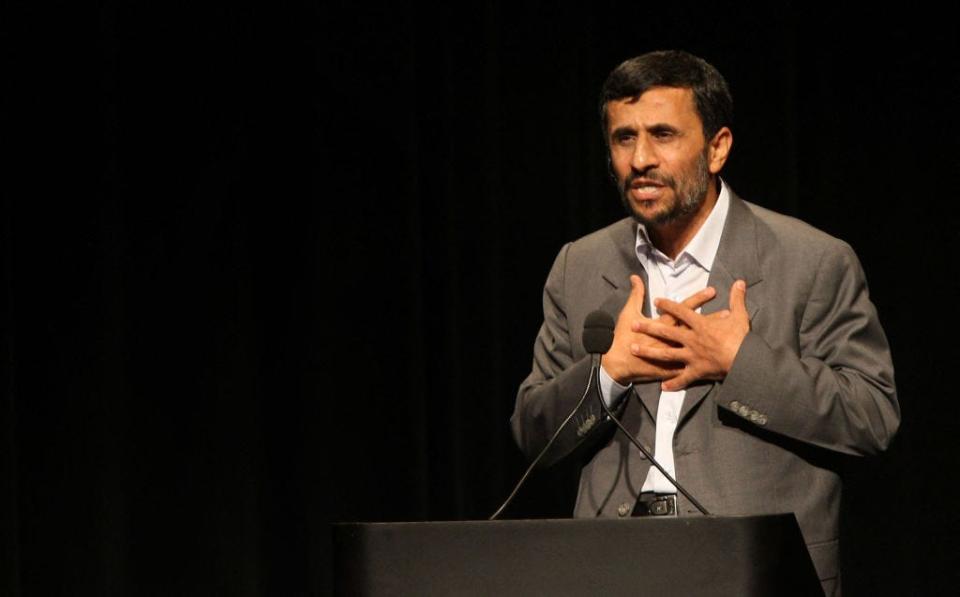
Elina, a 33-year-old masculine-presenting Iranian lesbian who asked that their last name not be published for safety reasons, told BI that they saw this attitude in action.
They recalled a psychologist trying to persuade them that they were transgender.
"I was not uncomfortable with my body," Elina said, adding that the therapist thought all gays and lesbians were trans.
Elina, who refused to undergo the procedures, eventually left the country.
Shadi Sadr, an Iranian human-rights lawyer and a cofounder of Justice for Iran, told BI that direct coercion of gay people into transitioning was less common than in the past but that societal pressures remain strong.
"Against the context where homosexuality is not only a sin but a crime, many people in the LGBTQ+ community see that, going through the process of sex reassignment, they would gain relative freedom and human rights," she said.
"That's the whole coercive situation," she said.
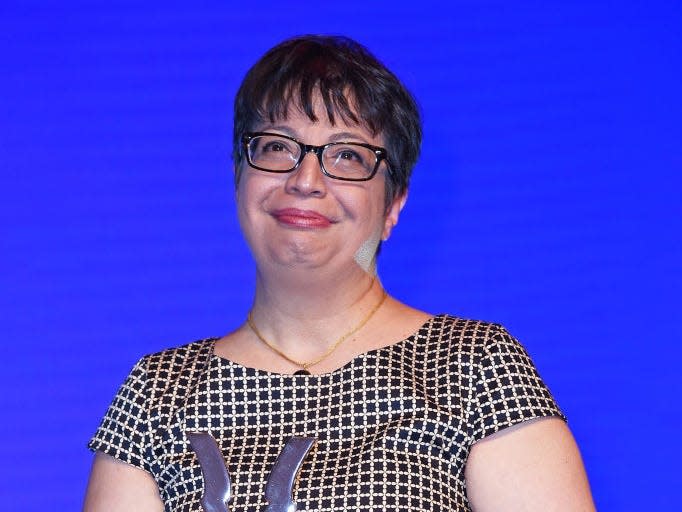
An independent expert tasked by the United Nations to examine human-rights issues in Iran painted a bleak picture of the quality of gender-affirming care for Iranians in a March 2015 report
It described a system that was "clearly substandard and not in line with professional norms." It said people were often left with complications like severe bleeding, infections, scarring, and abnormally shaped sexual organs.
Soheil, an Iranian whose last name BI is withholding for his safety, underwent a mastectomy, oophorectomy, and hysterectomy 13 years ago at an Iranian public hospital in Karaj.
He said he received about $3,000 toward the surgery from the state, but the operations left him with lasting scars and health complications.
Soheil, who's now living as a refugee in Canada, is hoping to have corrective surgeries to repair the botched work done by Iranian surgeons.
Soheil
Anecdotal evidence from BI's sources suggests that only a few surgeons are trained in gender-affirming surgeries.
Indeed, there aren't many surgeons at all — a Lancet Commission on Global Surgery reported that Iran has 1.7 surgeons per 100,000 people, compared to 36.1 in the US.
"They do garbage, garbage surgery," Soheil said.
He has a "big hole" in his chest where muscle tissue was removed, he said. "When I go somewhere and need to remove my shirt, I feel embarrassed."
Soheil's experience was not just physically traumatic. From the outset, he said, nurses subjected him to harassment and ridicule. One nurse messed with his catheter, taunting him repeatedly about his decision to transition, he said.
He also recounted the story of a friend who decided to get surgery at a private Iranian hospital after being put off by horror stories about the public system.
After the surgery, the friend was unable to afford a stay in the hospital, so he checked himself into a motel, Soheil said. "He called one of his friends, saying that he didn't feel OK," Soheil said. "When his friend went, he had passed away."
Not a trans haven
Being ridiculed and othered is common for Iran's LGBTQ+ populations, said Varamini, the transgender man who had his surgery paid for by the state.
That's why, after his own transition, he worked with the State Welfare Organization of Iran to offer support to fellow transgender Iranians.
Later, he established his own organization, the Mahtaa Institute, which provides clandestine support to LBGTQ+ communities and sex workers. (He said the government heavily monitors his organization.)
While Varamini is grateful for his transition, he's confronted daily by the harsh realities others face.
Iran does offer opportunities for some transgender individuals, he said, but for many others, life is nothing short of "hellish."
Read the original article on Business Insider

